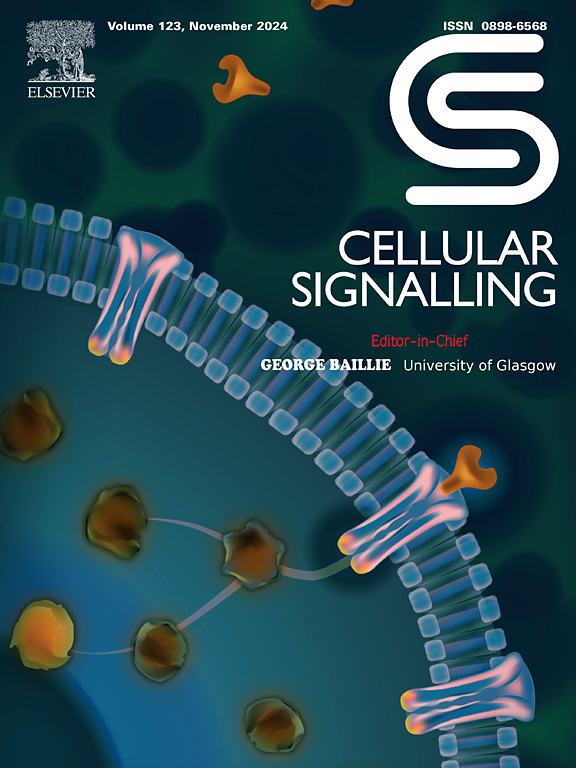Induction, amplification, and propagation of diabetic retinopathy-associated inflammatory cytokines between human retinal microvascular endothelial and Müller cells and in the mouse retina
IF 4.4
2区 生物学
Q2 CELL BIOLOGY
引用次数: 0
Abstract
Ocular levels of IL-1β, TNFα, IL-8, and IL-6 correlate with progression of diabetic retinopathy (DR). Müller cells (MC), which are crucial to maintaining retinal homeostasis, are targets and sources of these cytokines. We explored the relative capacities of these four DR-associated cytokines to amplify inflammatory signal expression both in and between human MC (hMC) and retinal microvascular endothelial cells (hRMEC) and in the mouse retina. Of the four cytokines, IL-1β was the most potent stimulus of transcriptomic alterations in hMC and hRMEC in vitro, as well as in the mouse retina after intravitreal injection in vivo. Stimulation with IL-1β significantly induced expression of all four transcripts in hMC and hRMEC. TNFα significantly induced expression of some, but not all, of the four transcripts in each cell, while neither IL-8 nor IL-6 showed significant induction in either cell. Similarly, conditioned media (CM) derived from hMC or hRMEC treated with IL-1β, but not TNFα, upregulated inflammatory cytokine transcripts in the reciprocal cell type. hRMEC responses to hMC-derived CM were dependent on IL-1R activation. In addition, we observed a correlation between cytokine expression changes following direct and CM stimulation and NFκB-p65 nuclear translocation in both hMC and hRMEC. Finally, in mice, intravitreal injections of IL-1β, but not TNFα, induced retinal expression of Il1b and CXCL8 homologues Cxcl1, Cxcl2, Cxcl3, and Cxcl5, encoding pro-angiogenic chemokines. Our results suggest that expression of IL-1β, TNFα, IL-8, and IL-6 may be initiated, propagated, and sustained by autocrine and paracrine signals in hRMEC and hMC through a process involving IL-1β and NFκB. Targeting these signals may help thwart inflammatory amplification, preventing progression to vision-threatening stages and preserving sight.
糖尿病视网膜病变相关炎症细胞因子在人类视网膜微血管内皮细胞和 Müller 细胞之间以及在小鼠视网膜中的诱导、放大和传播。
眼部 IL-1β、TNFα、IL-8 和 IL-6 的水平与糖尿病视网膜病变(DR)的进展相关。对维持视网膜稳态至关重要的缪勒细胞(MC)是这些细胞因子的靶点和来源。我们探讨了这四种与 DR 相关的细胞因子在人 MC(hMC)和视网膜微血管内皮细胞(hRMEC)以及小鼠视网膜中放大炎症信号表达的相对能力。在这四种细胞因子中,IL-1β是体外刺激hMC和hRMEC以及体内静脉注射后刺激小鼠视网膜转录组变化的最有效因子。IL-1β 能显著诱导 hMC 和 hRMEC 中所有四种转录本的表达。TNFα能明显诱导这四种转录本在每个细胞中的部分表达,但不是全部,而IL-8和IL-6在这两种细胞中均无明显诱导作用。同样,用 IL-1β 而不是 TNFα 处理 hMC 或 hRMEC 的条件培养基(CM)会上调对等细胞类型中的炎症细胞因子转录本。此外,我们还观察到细胞因子在直接和 CM 刺激后的表达变化与 NFκB-p65 在 hMC 和 hRMEC 中的核转位之间存在相关性。最后,在小鼠体内静脉注射 IL-1β(而非 TNFα)可诱导视网膜表达 Il1b 和 CXCL8 同源物 Cxcl1、Cxcl2、Cxcl3 和 Cxcl5(编码促血管生成趋化因子)。我们的研究结果表明,在 hRMEC 和 hMC 中,IL-1β、TNFα、IL-8 和 IL-6 的表达可能是由自分泌和旁分泌信号通过涉及 IL-1β 和 NFκB 的过程启动、传播和维持的。针对这些信号可能有助于阻止炎症的扩大,防止其发展到威胁视力的阶段并保护视力。
本文章由计算机程序翻译,如有差异,请以英文原文为准。
求助全文
约1分钟内获得全文
求助全文
来源期刊

Cellular signalling
生物-细胞生物学
CiteScore
8.40
自引率
0.00%
发文量
250
审稿时长
27 days
期刊介绍:
Cellular Signalling publishes original research describing fundamental and clinical findings on the mechanisms, actions and structural components of cellular signalling systems in vitro and in vivo.
Cellular Signalling aims at full length research papers defining signalling systems ranging from microorganisms to cells, tissues and higher organisms.
 求助内容:
求助内容: 应助结果提醒方式:
应助结果提醒方式:


